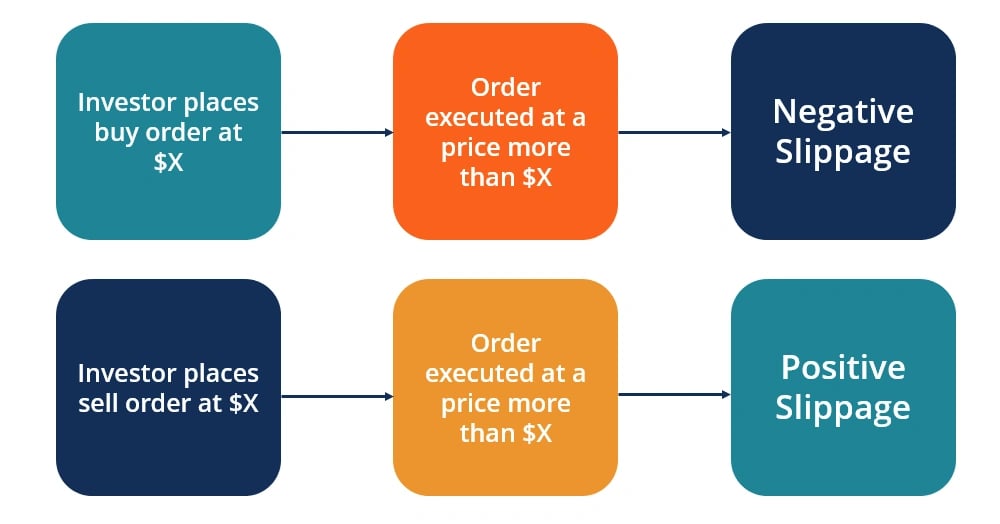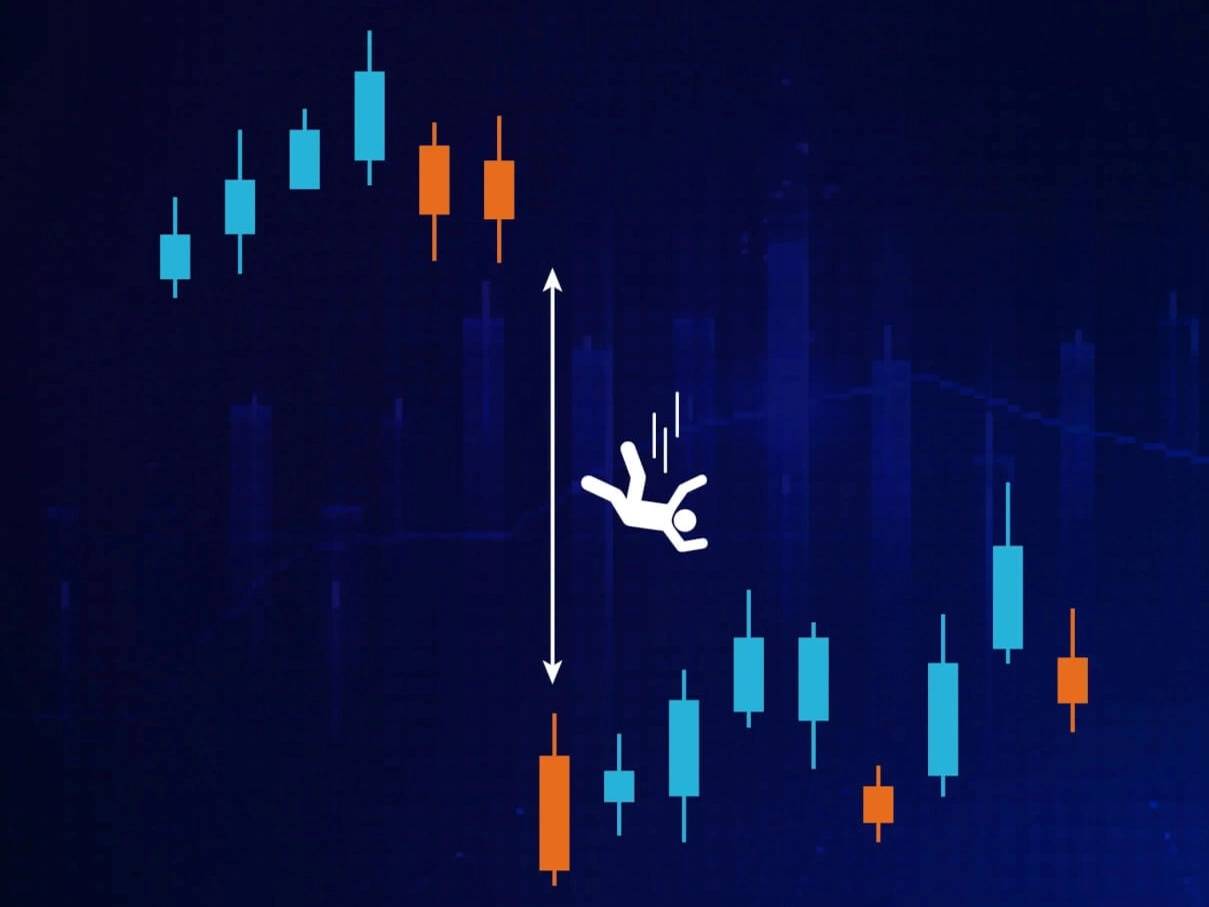위키 구독하기
Share wiki
Bookmark
Slippage
에이전트 토큰화 플랫폼 (ATP):에이전트 개발 키트(ADK)로 자율 에이전트 구축
Slippage
슬리피지(Slippage) 또는 암호화폐 슬리피지는 주문 실행 중 시장 변동으로 인해 발생하는 손실 또는 이익 금액입니다. 이는 거래의 예상 가격과 거래가 실행되는 실제 가격의 차이입니다.[1]
슬리피지는 특히 변동성이 높거나 유동성이 낮거나 가격 변동이 빠른 상황에서 발생합니다. 슬리피지는 매수 및 매도 거래 모두에 영향을 미칠 수 있습니다.[12]
슬리피지 허용 오차
슬리피지 허용 오차는 트레이더가 거래가 실행되는 것을 허용하는 범위입니다. 일반적으로 슬리피지 허용 오차가 높을수록 슬리피지로 인한 손실 위험이 커집니다.
예를 들어, 트레이더가 슬리피지 허용 오차를 1%로 설정하면 예상 가격에서 최대 1%의 가격 편차를 허용하겠다는 의미입니다. 그 순간, 암호화폐 가격이 거래가 완료되기 전에 트레이더에게 불리하게 움직이기 시작할 수 있습니다. 결과적으로 트레이더는 예상보다 낮은 가격을 받게 되어 큰 손실을 입을 수 있습니다.
적절한 수준의 슬리피지 허용 오차를 선택하는 것은 시장 상황과 거래 전략과 같은 요소에 따라 달라집니다. 시장이 변동성이 높을 때는 거래를 신속하고 효율적으로 실행하기 위해 더 높은 수준의 슬리피지 허용 오차가 필요할 수 있습니다. 반대로 변동성이 낮은 기간에는 더 낮은 수준의 슬리피지 허용 오차를 설정하여 더 유리한 실행 결과를 얻을 수 있습니다.[11]
계산
슬리피지
슬리피지는 현재 시장 가격과 실행된 거래 가격의 차이를 구하여 계산할 수 있습니다.
슬리피지 = 현재 시장 가격 – 실행된 거래 가격
예를 들어, 1 비트코인을 10,000달러에 매수 주문을 하고 9,800달러에 체결된 경우,
슬리피지 = 10,000 - 9,800 = 200달러입니다. 이 경우 슬리피지로 인해 예상보다 낮은 가격을 받게 됩니다.[9]
슬리피지 백분율
슬리피지 백분율은 현재 시장 가격과 실행된 거래 가격의 차이를 현재 시장 가격으로 나누어 계산할 수도 있습니다.
슬리피지 백분율 = (현재 시장 가격 – 실행된 거래 가격) / 현재 시장 가격
예를 들어, 위에서 언급한 경우,
슬리피지 백분율 = 200/10,000 = 2%입니다. 이는 슬리피지로 인해 예상보다 2% 낮은 가격을 받았다는 것을 의미합니다.[10]
유형
양의 슬리피지
양의 슬리피지는 '가격 개선'이라고도 하며, 거래가 예상 가격보다 더 나은 가격으로 실행될 때 발생합니다. 이는 사용자가 주문을 하고 주문이 실행될 때까지 가격이 빠르게 유리하게 움직이는 고변동성 상황에서 발생할 수 있습니다.
음의 슬리피지
음의 슬리피지는 거래가 예상 가격보다 불리한 가격으로 실행될 때 발생합니다. 시장 상황이 빠르게 변화하여 예상 가격과 실제 가격 사이에 차이가 발생할 때 발생합니다.[13]

원인
시장 변동성
암호화폐는 단기간에 상당한 가격 변동을 일으킬 수 있는 높은 수준의 변동성으로 알려져 있습니다. 이러한 변동성은 특히 시장이 빠르게 움직일 때 상당한 슬리피지를 초래할 수 있습니다.
예를 들어, BTC 시장의 높은 변동성은 주문이 체결되기 전에 고빈도 거래로 인해 빠른 가격 변동을 초래합니다. 이로 인해 매수/매도 가격이 20,000.5달러/20,001달러로 변경됩니다. 그런 다음 주문은 20,001달러에 체결되어 100 BTC 주문에 대해 1 BTC당 1달러의 추가 비용이 발생하여 총 100달러의 음의 슬리피지가 발생합니다.[3]
유동성
유동성은 자산을 상당한 가격 변동 없이 매수 또는 매도할 수 있는 용이성을 의미합니다. 많은 암호화폐, 특히 알트코인은 더 확립된 자산(즉, 특정 가격 수준에서 매수자와 매도자가 적을 수 있음)에 비해 유동성이 낮을 수 있으며, 특히 대량 주문의 경우 슬리피지 없이 거래를 실행하기 어렵게 만듭니다.
예를 들어, 유동성이 낮은 거래소에 BTC당 20,000달러에 100 BTC의 대량 시장 매수 주문이 있는 경우, 일부 주문은 100% 실행되려면 20,000달러 이상의 매도 주문과 일치해야 합니다. 예를 들어,
그러면 평균 가격은 20,000.75달러가 되며, 이는 원래 주문 금액(20,000달러)보다 높고 0.75달러의 음의 슬리피지가 발생합니다.[2]
뉴스 및 이벤트
주요 뉴스 발표, 공지 또는 이벤트는 신속하고 예상치 못한 가격 변동을 유발할 수 있습니다. 트레이더는 종종 이러한 이벤트에 실시간으로 반응하여 주문 불균형과 정상적인 거래 과정의 중단을 초래합니다. 결과적으로 실행 가격은 예상 가격과 크게 다를 수 있습니다.
거래소 지연 및 지연 시간
빠르게 변화하는 암호화폐 시장에서 거래가 실행되는 속도는 매우 중요합니다. 주문이 접수된 시점과 주문이 실행된 시점 사이의 지연 또는 지연 시간은 특히 시장 활동이 활발한 기간에 슬리피지에 기여할 수 있습니다.[14]
잘못된 내용이 있나요?
